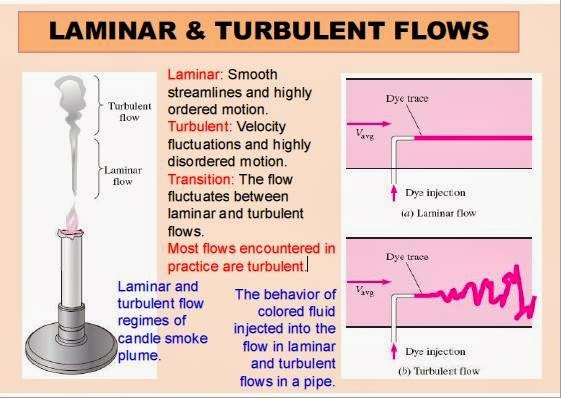
Your donations will help us to run our website and serve you BETTER. Hey man, If you have come this far, do give us feedback in the comment section. You can also find us on Mix, Twitter, Pinterest, and Facebook. If you like this article, share it if you like, like it if you share it. In any blowoff process or application, laminar airflow is going to be much more effective at cooling or drying than the turbulent airflow delivered by commonly. Some of the properties of turbulent flow are: Up until a certain velocity, those layers all flow smoothly in the same direction, maintaining a more-or-less parallel trajectory and not. If the Reynolds number of the given fluid is greater than 4000 then the given fluid is turbulent in nature. Imagine the fluid that you’d like to pump as being comprised by many thin layers. The basic criteria to define whether the fluid flow is laminar or turbulent is using the Reynolds number. This type of fluid flow does not flow in a straight direction. Turbulent flow is a type of fluid (liquid or gas) flow that is characterized by chaotic, unpredictable, and irregular fluctuation in velocity, pressure, and other flow parameters. Some of the properties of laminar flow are: Difference Between Viscosity and Density in Tabular Form.Viscosity Examples for Beginners: A Step-by-Step Guide Turbulent flow, on the other hand, is louder, faster moving water characterized by erratically moving water particles that mix between the parallel layers.If the Reynolds number of the fluid is smaller than 2300 then the given fluid is laminar in nature. Just like turbulent flow, the basic criteria to define whether the fluid flow is laminar or turbulent is using the Reynolds Number. In other words, this type of liquid always flows in a straight line fashion. Laminar flow is a type of fluid flow that is characterized by the smooth, undisturbed, orderly movement of fluids during which the particles of fluid flow in parallel layers with little to no mixing between them. Equation 1: Re V Dh/u Re Reynolds Number (no dimensions) V Velocity (Feet/sec or Meters/sec) Dh hydraulic diameter (Feet or Meters) u Kinematic Viscosity (Feet2/sec or Meter2/sec) The value of Re will determine the state in which the fluid (liquid or gas) will move. There is a mixing of fluids during turbulent flow.Įxamples of laminar flow include fountain pens, flow of honey, etc.Įxamples of turbulent flow include waterfall, atmospheric turbulence, etc. There is no mixing of fluids during laminar flow. Turbulent fluids shows high pressure drop. Turbulence flow shows a fluctuating flow rate. If Reynolds number is greater than 4000 then the fluid is turbulent. If Reynolds number is smaller than 2300 then the fluid is Laminar. Laminar flow (sometimes described as a steady flow) is represented by smooth, parallel streamlines, whereas in turbulent flow, the streamlines are irregular and. Turbulent flow generally occurs at high velocity. Laminar flow occurs generally at low velocity. Turbulent flows are chaotic and irregular.

10 Differences Between Laminar and Turbulent Flow


 0 kommentar(er)
0 kommentar(er)
